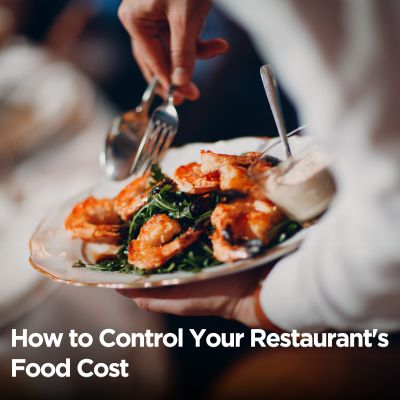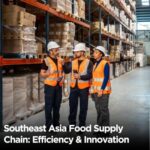Managing food costs is a fundamental part of running a successful restaurant. If food costs aren’t kept in check, they can quickly eat away at your profit margins, leaving you with little room to grow or even stay afloat.
In an industry where competition is fierce, knowing how to control food costs in a restaurant can be the difference between thriving and struggling to make ends meet.
When food costs are high, it’s not just about paying more for ingredients; it impacts everything. Higher expenses can force you to raise menu prices, which may drive customers away or cut corners in quality, affecting the dining experience.
Without strong food cost control, your restaurant’s financial health is at risk, threatening short-term profits and long-term sustainability. In this blog, we’ll learn about the practical ways to control food costs in a restaurant and set your business up for success.
What is Food Cost, and Why Does It Matter?
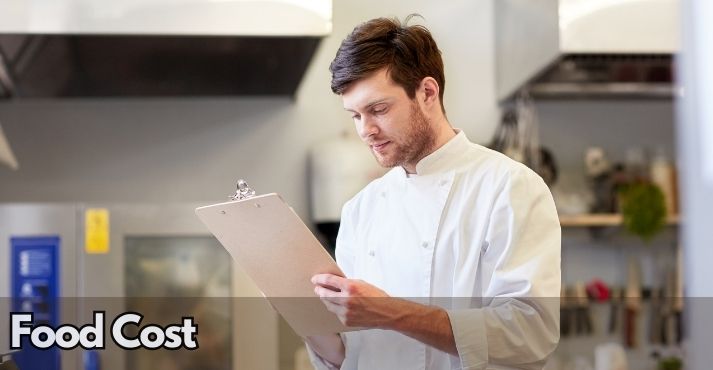
Food cost is the percentage of a restaurant’s revenue used to purchase food inventory. It’s crucial for measuring profits and ensuring the business stays sustainable.
The food cost percentage should fall between 28% and 35%, depending on the restaurant type. Maintaining this balance helps you spend enough on quality ingredients without sacrificing profitability.
Managing food costs is an important part of restaurant cost control. Fluctuations in food prices, whether due to inflation, supplier price changes, or waste, can significantly impact the bottom line.
If food costs rise too much, operators must adjust by increasing menu prices or cutting back on quality. Both can hurt customer satisfaction and sales. Keeping food costs in check is essential to managing restaurant expenses and sustaining long-term growth.
How to Calculate Food Cost Percentage
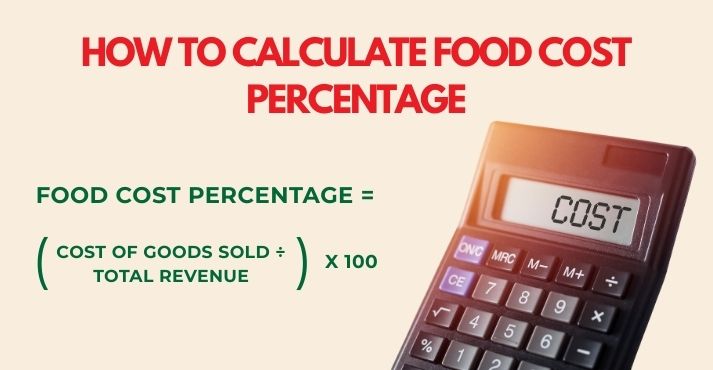
To calculate the food cost percentage, use this formula:
Food Cost Percentage = (Cost of Goods Sold ÷ Total Revenue) x 100
Here’s an example:
Imagine your restaurant’s total revenue for the month is $50,000, and the cost of food sold is $15,000. To calculate the food cost percentage, divide $15,000 by $50,000, then multiply by 100. This gives a food cost percentage of 30%.
Tracking food cost trends over time helps identify problem areas, like rising ingredient prices or excessive waste. If you notice a steady increase in food costs, it could indicate issues such as inefficient inventory management or the need to adjust your discount pricing strategy.
Monitoring these trends allows you to adjust, keeping your food cost in check and supporting profitability.
7 Strategies to Reduce and Control Food Cost
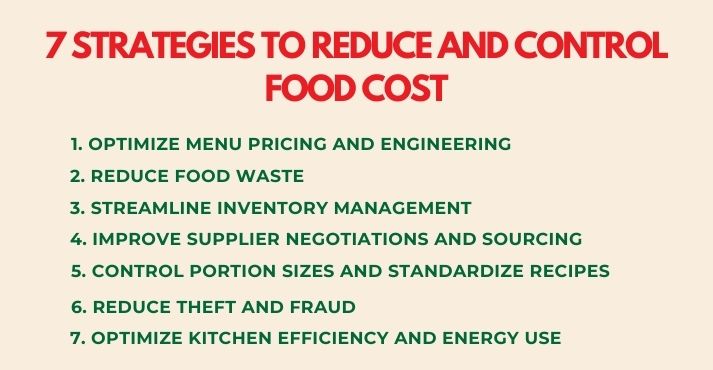
Controlling food costs is an ongoing challenge for many restaurant owners. However, reducing costs without sacrificing quality with the right strategies is possible. Here are some proven methods for managing food cost-effectively:
1. Optimize Menu Pricing and Engineering
Conduct a thorough menu analysis to identify high-margin and low-margin dishes. Menu engineering techniques, such as categorizing dishes as stars, plow horses, puzzles, and dogs, help you assess the performance of each item.
Stars are popular and profitable dishes, while dogs are those that neither sell well nor contribute significantly to profit.
You can enhance overall profitability by promoting high-margin items and reevaluating or eliminating low-performing ones. Many restaurants that invest in menu engineering see profits jump by 10-15% or more.
Additionally, adjusting portion sizes and ingredient costs without compromising the quality of the meal can help improve margins. Incorporating seasonal or locally sourced ingredients can reduce costs and refresh your menu offerings.
These thoughtful adjustments help maintain control over costs while ensuring customers continue to enjoy high-quality meals, ultimately making your restaurant more profitable and sustainable.
2. Reduce Food Waste
Reducing food waste starts with proper staff training. Educate kitchen staff on portion control and efficient food prep methods to minimize waste during cooking.
For example, Sweetgreen, a popular salad chain, successfully reduced food waste by standardizing portions and using data-driven insights to adjust ordering practices.
By implementing FIFO (First In, First Out) and tracking waste, they could identify areas of improvement and cut costs significantly.
Using FIFO ensures older ingredients are used first, preventing spoilage and waste from expired items. Implementing waste tracking systems gives insights into which ingredients are frequently wasted, allowing you to adjust ordering practices accordingly.
When you can identify the most common waste items, you can create strategies to use them more effectively or replace them with more cost-effective alternatives.
These steps can significantly cut waste, make your kitchen operations more efficient, and reduce restaurant expenses.
3. Streamline Inventory Management
Implementing a restaurant inventory management system is one of the best ways to gain real-time visibility into your stock levels and identify issues with over-purchasing or spoilage.
Set par levels based on each ingredient and product’s sales history, which helps avoid stockouts and over-ordering. Regular inventory audits are essential for tracking what’s in your storage, ensuring items are used before expiration, and preventing theft or mismanagement.
These practices help ensure that inventory is balanced, reducing waste and improving the efficiency of the supply chain. Technology integration in restaurants allows you to automate many tasks, streamlining operations and saving valuable time.
As your restaurant grows or if you’re considering restaurant expansion, these systems scale with you, ensuring food cost control and profitability at every stage.
A great example is Coastal Breeze Bistro in Florida, which shifted from manual inventory tracking to a digital system using Mstar POS.
Within a few months, they cut food waste significantly and lowered monthly food costs by nearly 15%, showing how effective inventory management can boost profitability.
4. Improve Supplier Negotiations and Sourcing
Building strong relationships with multiple vendors gives you more leverage when negotiating prices, ensuring a steady supply at competitive rates. Vendors are often more flexible with pricing and payment terms when they trust you as a reliable partner.
Don’t rely solely on one supplier. Diversifying your sources can protect you from disruptions or sudden price hikes. Regularly compare local sourcing with bulk purchasing to find the right balance between cost, freshness, and quality.
While bulk buying can reduce unit costs, local suppliers may offer fresher ingredients with lower transport fees. Also, consider using seasonal, typically more affordable ingredients and reduce the reliance on expensive imports.
Choosing the right suppliers for your restaurant cuts food costs and enhances supply consistency and menu innovation.
5. Control Portion Sizes and Standardize Recipes
Inconsistent portion sizes can slowly increase your food costs. Use pre-measured ingredients, portioning tools, and clear visual aids to help staff serve consistent quantities. This prevents both over-serving and waste.
Standardized recipes are just as important. They ensure every dish tastes the same no matter who’s cooking and help control ingredient usage. Train your staff to follow these recipes precisely and reinforce the habit with regular quality checks.
Offering multiple portion sizes can also be smart, letting customers choose what fits their appetite while giving you better control over food usage and costs. Altogether, these practices are a core part of effective food cost management.
6. Reduce Theft and Fraud
Theft, poor inventory handling, and fraud can slowly affect your profits. Therefore, you need strong inventory controls with clear roles and responsibilities.
Schedule regular audits and use tech systems like inventory software connected to your POS system to spot any issues quickly. Putting cameras in storage areas helps prevent misuse and keeps things clear.
In addition, establish strict cash-handling policies and train your staff thoroughly. Make sure only trusted individuals have access to high-value inventory or cash drawers. Tightening these controls protects your profits and encourages responsibility and trust.
For example, Denny’s implemented loss prevention audits to monitor restaurant transactions.
This system aligned surveillance footage with POS data, enabling auditors to effectively identify and address employee theft. As a result, Denny’s significantly reduced discount theft and improved overall profitability.
7. Optimize Kitchen Efficiency and Energy Use
An efficient kitchen doesn’t just speed things up. It also cuts costs. One of the easiest ways to start is by reducing overproduction. Use your sales data to predict better how much to prep, which helps minimize ingredient waste.
Batch cooking improves workflow, saves labor, and keeps food quality consistent during busy hours.
Energy use is another major factor. Heating and water alone account for about 40% of an average restaurant’s energy spend. Upgrading to energy-efficient appliances like induction cooktops or low-power refrigeration can lead to big savings.
Small changes like smarter prep scheduling and a more organized kitchen layout can reduce waste and lower utility costs. These steps help your restaurant run more efficiently and save money in the long run.
Conclusion
Controlling food costs is not just about reducing expenses. It is about creating a smarter and more sustainable restaurant.
Your operation, including menu pricing, inventory tracking, staff training, and energy use, affects your overall costs. By focusing on food cost management, you can improve margins, cut waste, and use resources better.
You do not need to make big changes all at once. Start by tracking your food cost percentage, reviewing your menu performance, tightening inventory processes, and improving kitchen workflows. These small steps add up over time and can significantly impact your bottom line.
Whether you are facing rising supplier prices or planning for restaurant growth, learning how to control food costs in your restaurant is essential. With the proper focus and tools, you can build a well-run kitchen that offers value and quality.

